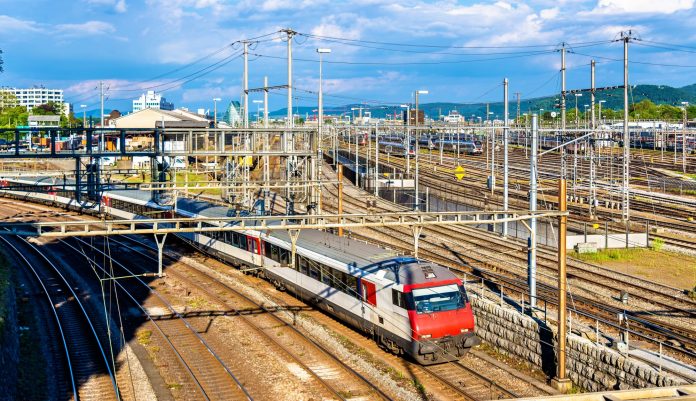Campaigners Allianz pro Schiene have stressed the need for Germany to further electrify its rail network – especially the border crossings – if a shift in freight transport from roads to railways is to be achieved.
Although around 60 per cent of German railways are electrified, neighbours Poland have achieved 64 per cent electrification, Austria 71 per cent, the Netherlands 76 per cent, Belgium 86 per cent and in Switzerland, 100 per cent of the rail network is electrified.
Crucially, of the 57 border crossings that connect Germany’s railways to neighbouring countries, only 25 (43 per cent) are equipped with overhead power lines, according to research from Allianz pro Schiene.
The organisation’s managing director Dirk Flege said: “Long-distance freight trains are pulled by electric locomotives but out of ten border crossings with Poland only one is electrified. And of the 14 rail routes to the Czech Republic, again only one is electrified. So it is no wonder that huge numbers of east European HGVs flood Germany’s motorways every day.
Like this story? Follow us on Facebook to keep up to date on rail industry news
“Without the electrification of the rail freight network, the flood of HGVs cannot be stopped.”
According to the group, instead of seeing a shift of transporting freight by rail rather than road, rail freight transport’s market share is actually decreasing and the lack of overhead cables is one reason for the poor state of affairs.
Dirk Flege added: “The economic viability of freight trains is at its highest when large volumes of goods are transported over long distances. It is therefore no wonder that 50 per cent of the freight on Germany’s railways is for international transport.
“The lack of overhead cables at border crossings in Germany forces freight trains, particularly those from Eastern Europe, into a few network bottlenecks, which makes it impossible to achieve any significant modal shift from trucks onto goods trains.”
Read more: What next for bi-mode trains?



